Figure shows, three long straight wires parallel and equally speed with identical currents. Then, the force acting on each wire due to the other is

Fa>Fb>Fc
Fb>Fc>Fa
Fc>Fa>Fb
Fb>Fa>Fc
The correct Answer is:B
Step by step video, text & image solution for Figure shows, three long straight wires parallel and equally speed with identical currents. Then, the force acting on each wire due to the other is by Physics experts to help you in doubts & scoring excellent marks in Class 12 exams.
Topper's Solved these Questions
- BOOK - DC PANDEYCHAPTER - MAGNETIC FIELD AND FORCESEXERCISE - Assertion and reason20videos
MAGNETIC FIELD AND FORCES
- BOOK - DC PANDEYCHAPTER - MAGNETIC FIELD AND FORCESEXERCISE - Match the following4videos
MAGNETIC FIELD AND FORCES
- BOOK - DC PANDEYCHAPTER - MAGNETIC FIELD AND FORCESEXERCISE - Check point54videos
MAGNETIC FIELD AND FORCES
- BOOK - DC PANDEYCHAPTER - INTERFERENCE AND DIFFRACTION OF LIGHTEXERCISE - Level 2 Subjective5videos
INTERFERENCE AND DIFFRACTION OF LIGHT
- BOOK - DC PANDEYCHAPTER - MAGNETICSEXERCISE - MCQ_TYPE1videos
MAGNETICS
Similar Questions
Consider three long straight parallel wire as shown in figure. Find the force experienced by a 25cm length of wire C.
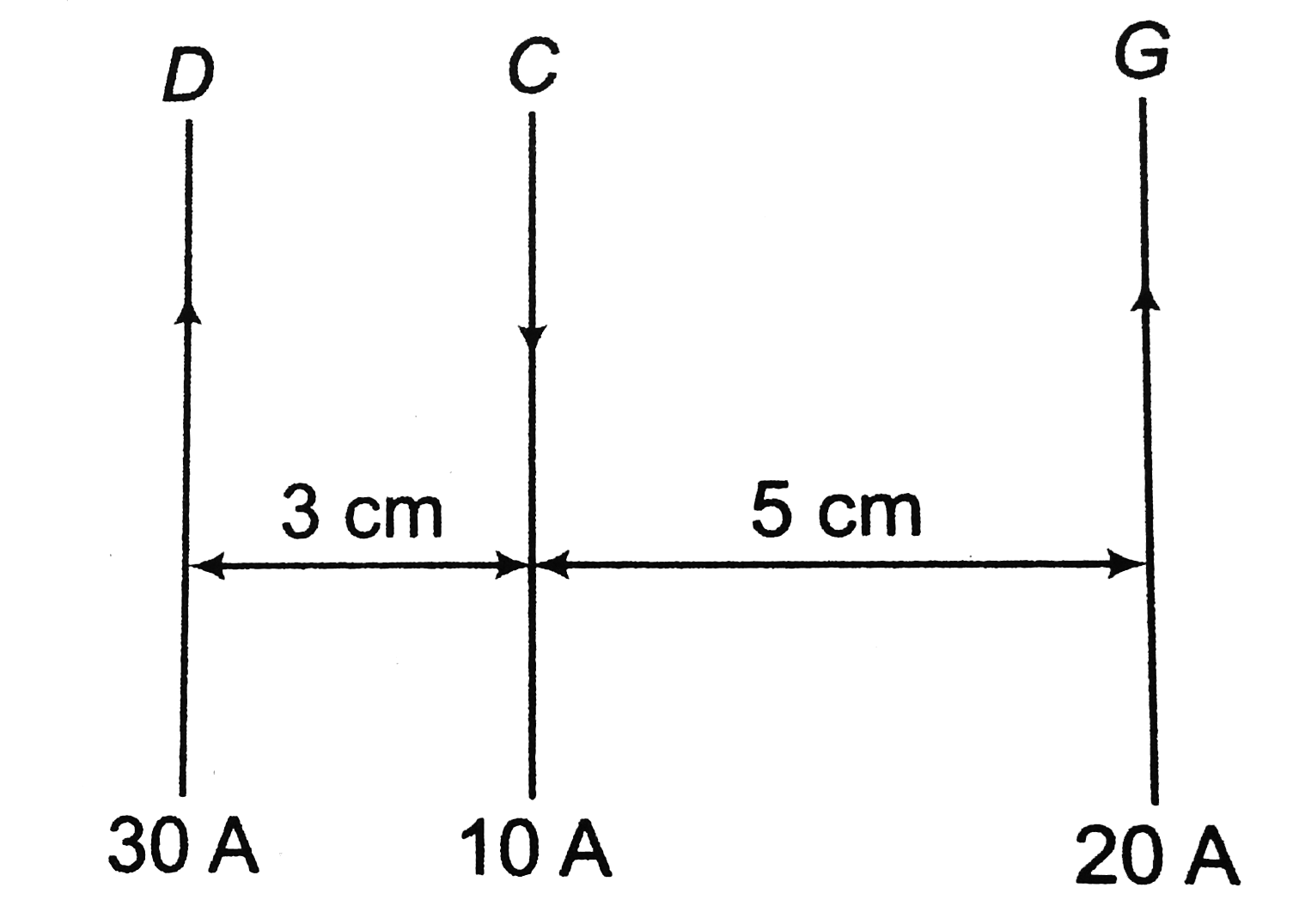 View Solution
View SolutionIn figure shows three long straight wires P,Q and R carrying currents normal to the plane of the paper. All three currents have the same magnitude. Which arrow best shows the direction of the resultant force on the wire P
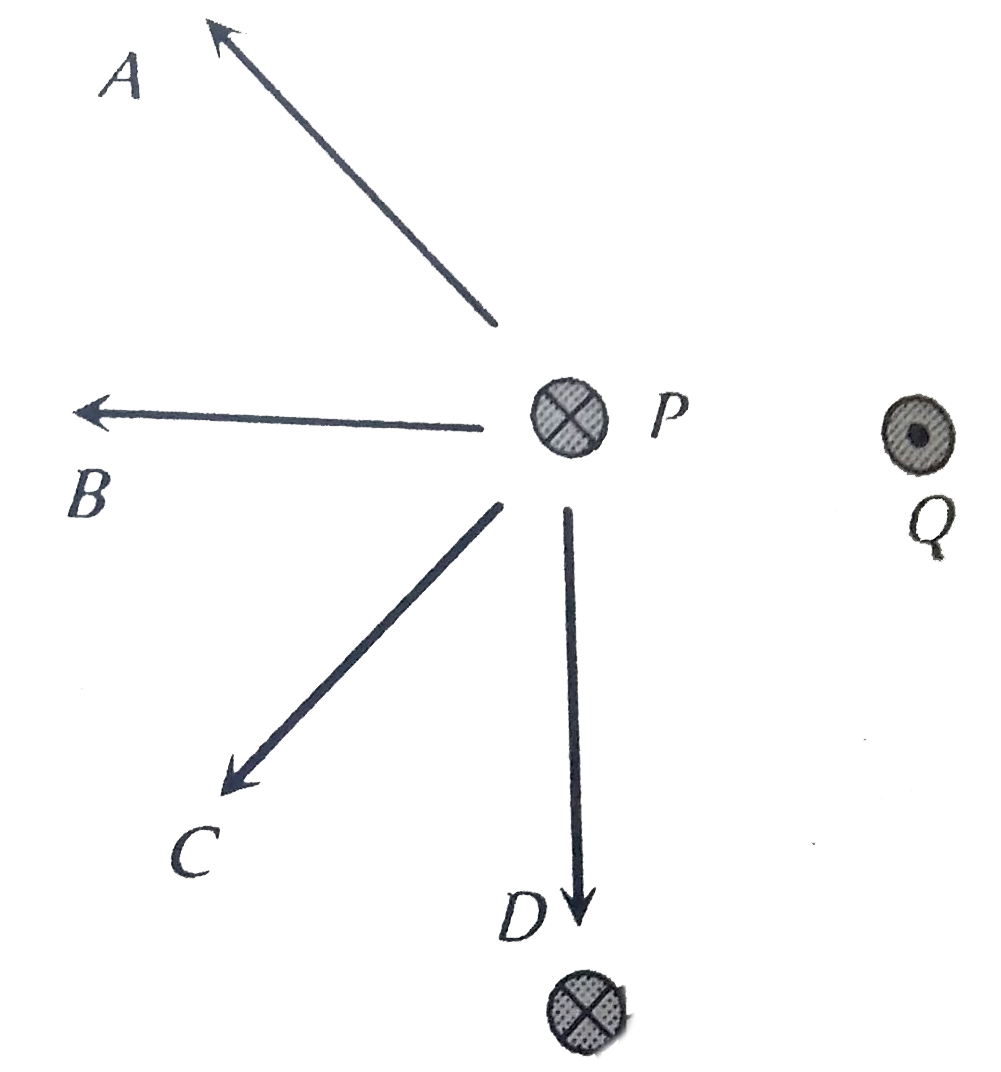 View Solution
View Solution
Knowledge Check
- Question 1 - Select One
There long straight wires A, B and C are carrying current as shown figure. Then the resultant force on B is directed
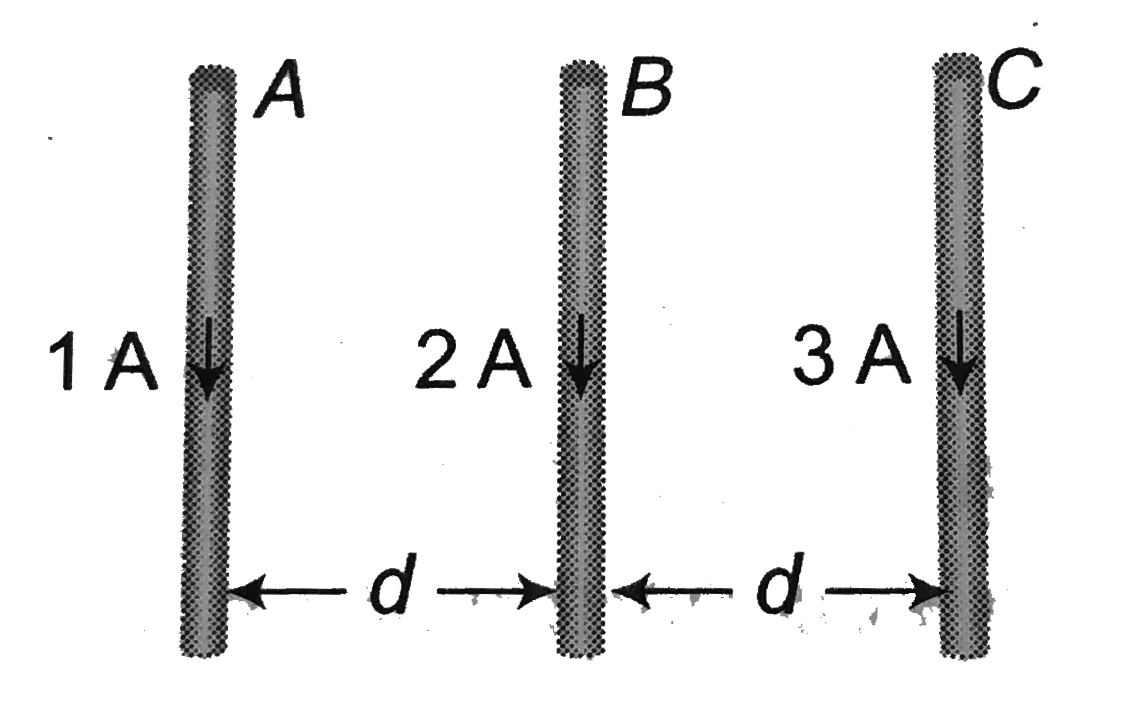 ATowards ABTowards CCPerpendicular to the plane of pape and outwardDPerpendicular to the plane of paper and inward
ATowards ABTowards CCPerpendicular to the plane of pape and outwardDPerpendicular to the plane of paper and inward - Question 2 - Select One
A long straight wire carries a current of 10.05 A to the right. A circular loop of wire lies below the long straight wire, as shown in the following figure. The current in the long straight wire decreases to zero in a time of 4.652 s. What direction does the induced current flow around the circular loop of wire?
 ACounterclockwiseBClockwiseCNo induced current flows around the loopDThe information given is insufficient for determining the direction of the induced current
ACounterclockwiseBClockwiseCNo induced current flows around the loopDThe information given is insufficient for determining the direction of the induced current - Question 3 - Select One
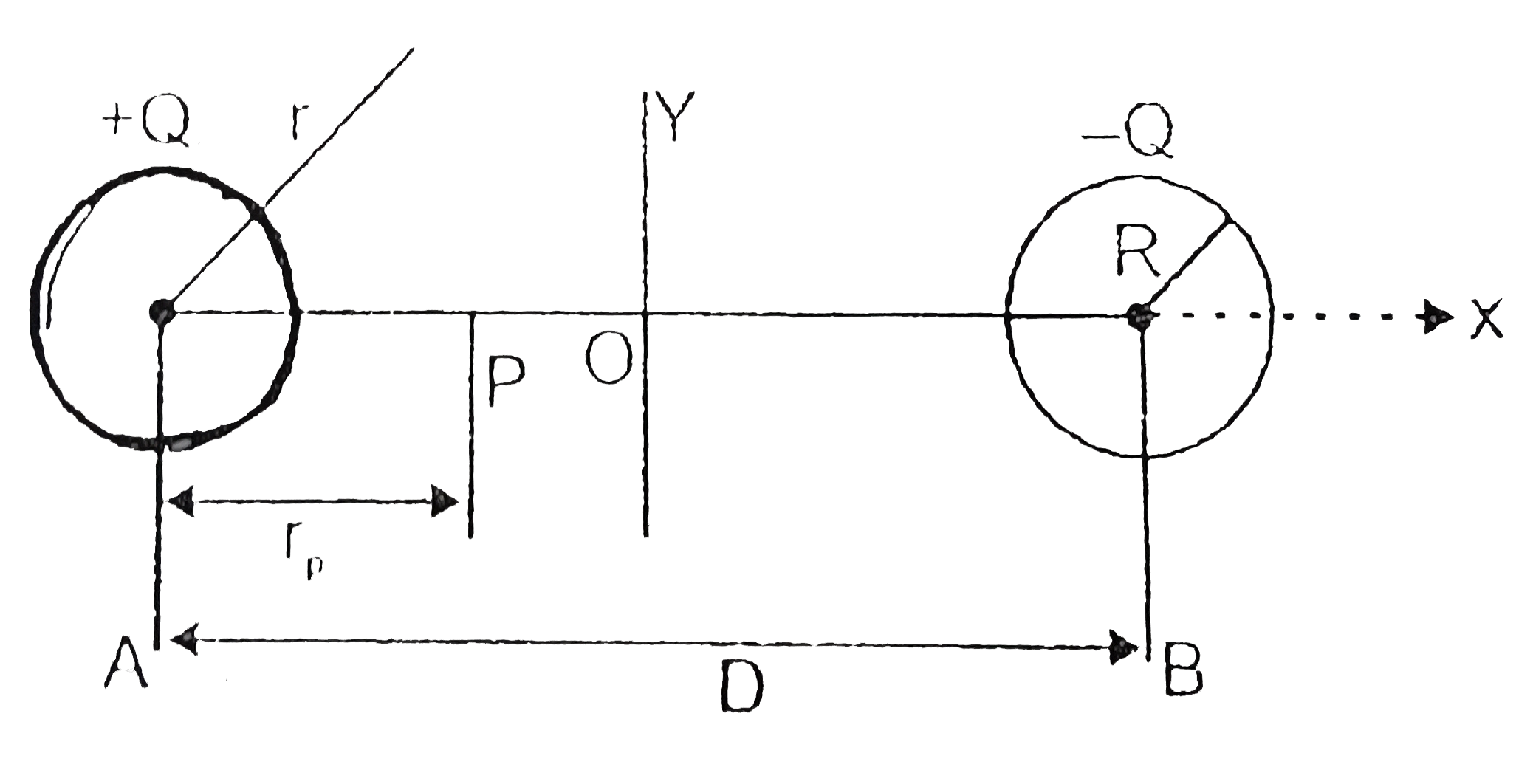
The figure shows two identical long straight metal wires, A and B placed parallel to z-axis the cross sectional radius of each wire is R and the separation of the two wires is D>>R. The electric potential at a perpendicular distance r>R from a long straight wire due to that wire is given by V=−kln(rR) where k is a positive constant. the wires carry charges +Q and −Q per unit length respectively. Then
Q. As D>>R, the electric field due to a long straight wire has cylindrical symmetry. The charge per unit length of the wire isAkε0Bπkε0C4πkε0D2πkε0
A negative test charge is moving near a long straight wire carrying a current. The force acting on the test charge is parallel to the direction of the current. The motion of the charge is:
View SolutionIn figure, a wire perpendicular to a long straight wire is moving parallel to the later with a speed v=10m/s in the direction of the current flowing in the later. The current is 10A. What is the magnitude of the potential difference between the ends of the moving wire?
 View Solution
View Solution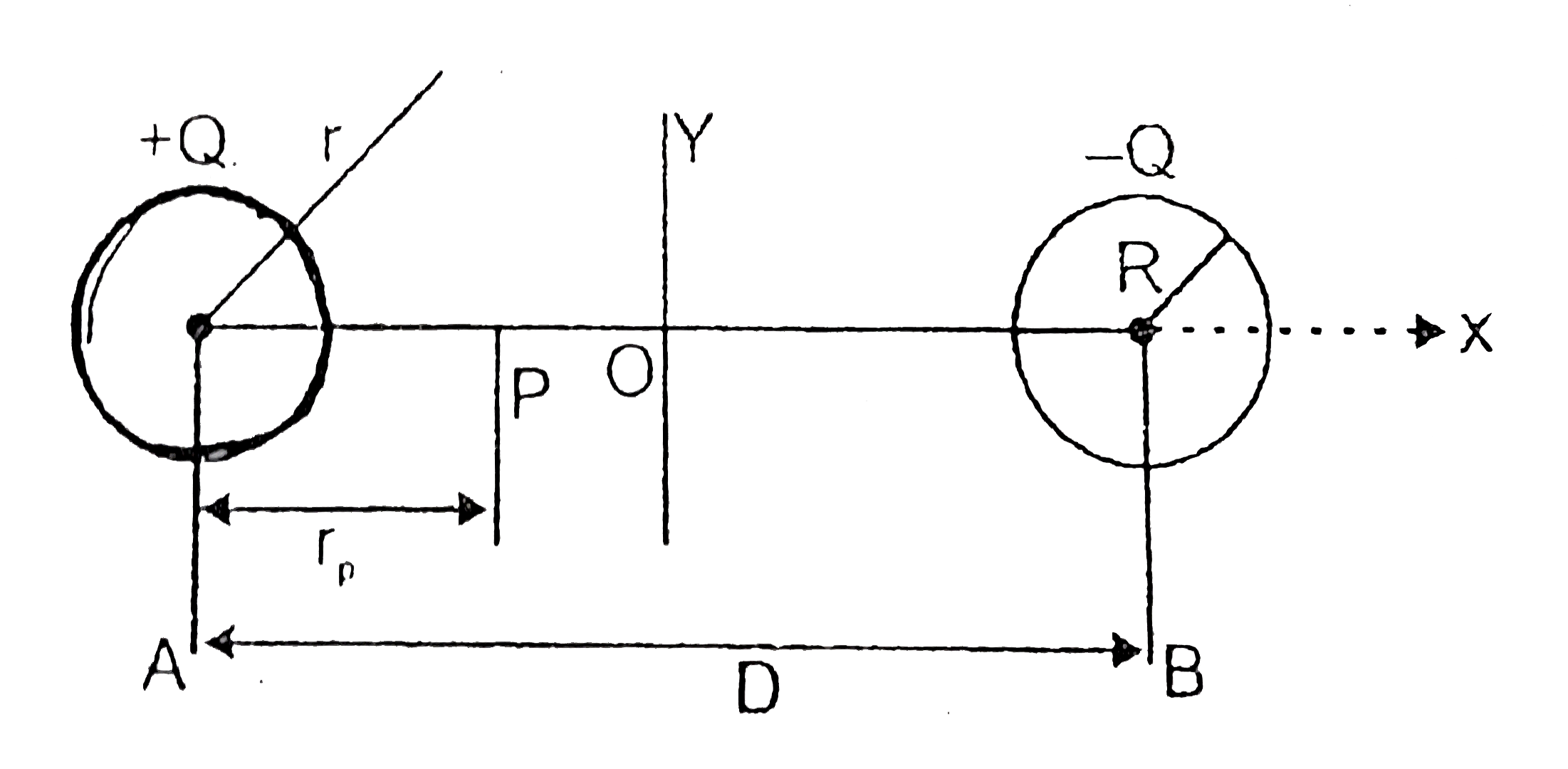
The figure shows two identical long straight metal wires, A and B placed parallel to z-axis the cross sectional radius of each wire is R and the separation of the two wires is D>>R. The electric potential at a perpendicular distance r>R from a long straight wire due to that wire is given by V=−kln(rR) where k is a positive constant. the wires carry charges +Q and −Q per unit length respectively. Then
Q. Consider a point P on the x-axis. The electric field at P is given by:View SolutionThree long, straight and parallel wires are arranged as shown in Fig. The forces experienced by 10 cm length of wire Q is
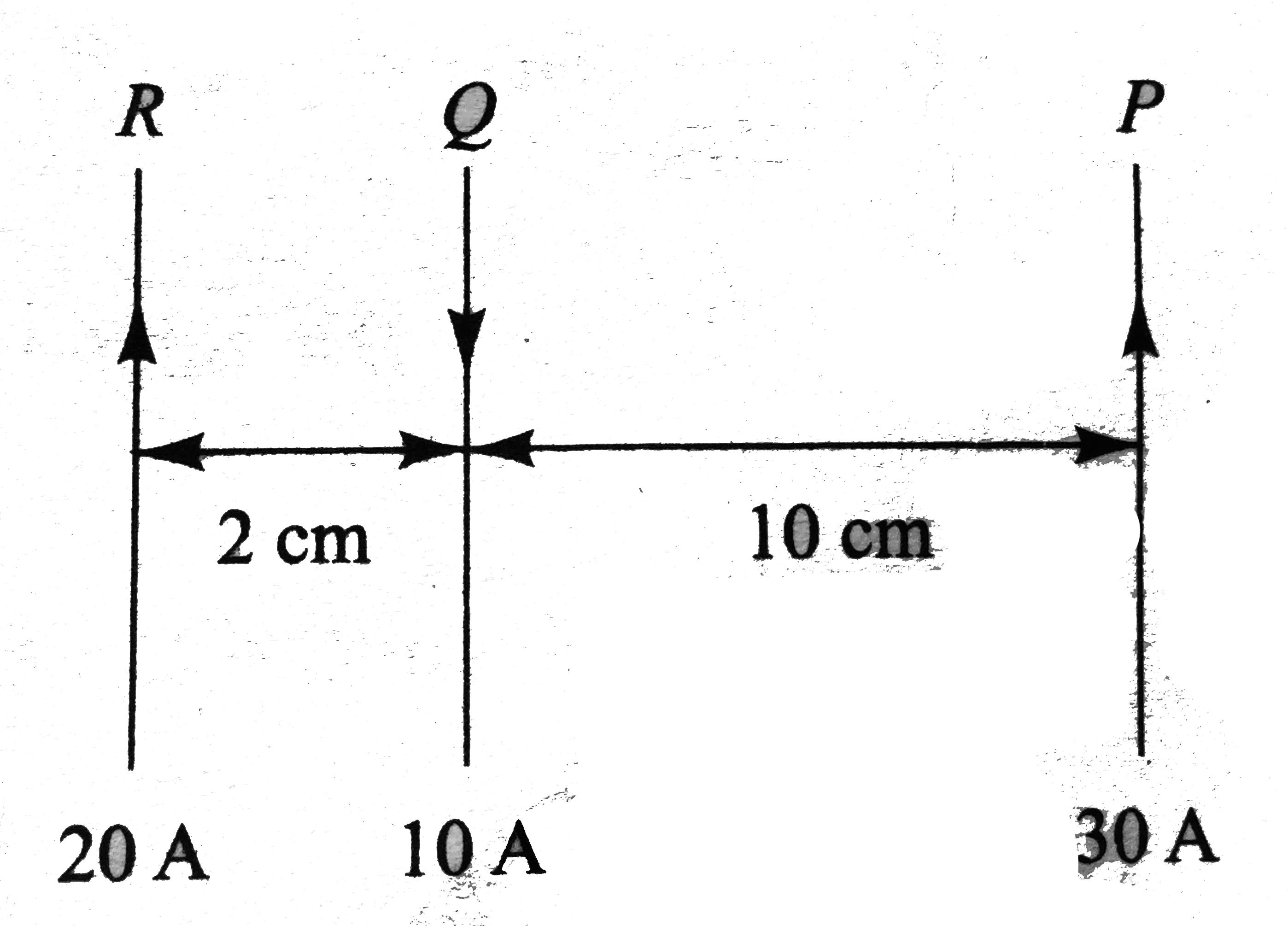 View Solution
View SolutionThree infinite straight wires A, B and C carry currents as shown in figure. The resultant force on wire B is directed
 View Solution
View Solution
